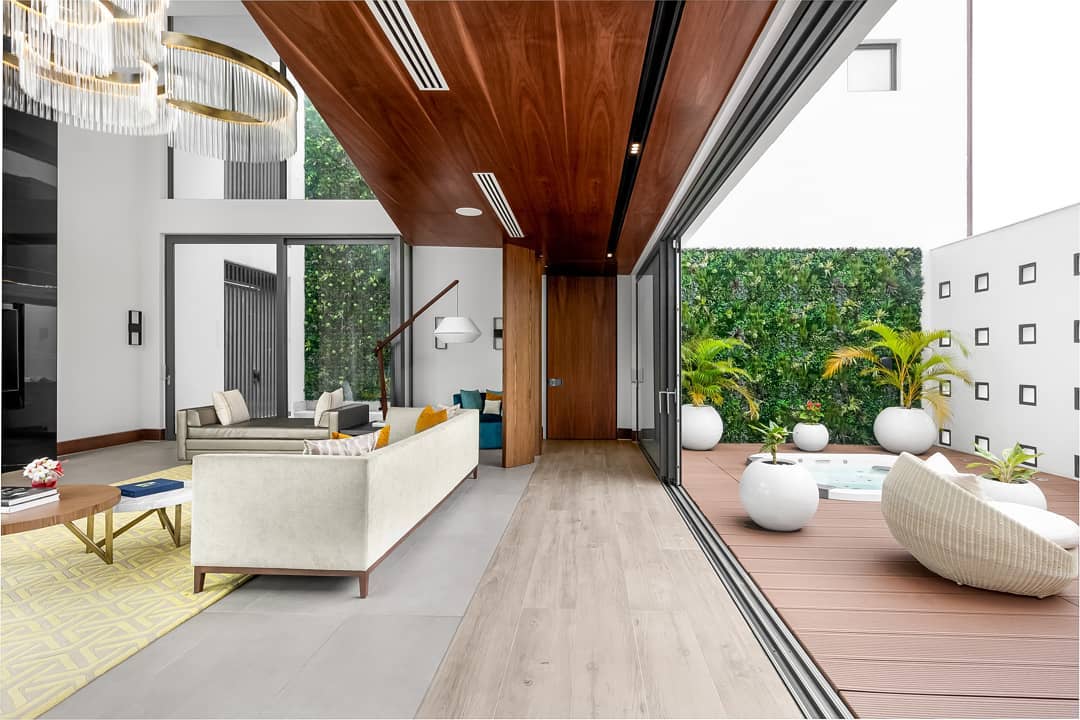The concept of luxury in home decor extends beyond opulent materials and designer labels.
It’s deeply rooted in the psychology of human well-being, where the aesthetics of our surroundings can profoundly impact our mood, health, and overall sense of happiness. This exploration into the psychology of luxury and its influence on well-being takes us on a journey through the nuances of high-end decor and its effects on our daily lives.
Defining Luxury
Luxury in interior design is an intricate tapestry woven from various threads of quality, craftsmanship, and storytelling. It transcends the mere idea of price tags and brand names, elevating into a realm where each piece of decor is a testament to artistry and history. Luxury decor stands out for its uniqueness and exclusivity, elements that echo one’s identity and add layers of comfort and distinction to living spaces.

The materials used in luxury design are carefully selected for their superior quality and aesthetic appeal. From rare woods and precious metals to sumptuous fabrics and intricate stonework, these materials are chosen not just for their looks but for their ability to endure and maintain their allure over time.
Craftsmanship in luxury items is marked by meticulous attention to detail. It’s evident in the precision of joinery in furniture, the delicate embroidery on fabrics, and the flawless finishes on surfaces. This level of craftsmanship ensures that every piece is not just functional but also a work of art deserving of admiration and respect.
Sensory Experience in Luxury Decor
The sensory experience of luxury decor plays a crucial role in well-being. The tactile feel of a plush velvet sofa, the visual appeal of a beautifully curated art piece, or the ambient glow from a designer hand painted lamp can positively stimulate the senses. These sensory experiences can create a therapeutic environment, aiding in relaxation and mental rejuvenation.

The Emotional Impact of Luxurious Spaces
Luxurious spaces have a profound ability to evoke a spectrum of emotions, influencing everything from our sense of tranquillity to our feelings of self-worth. These environments, crafted with attention to detail and aesthetic harmony, can become sanctuaries that promote relaxation and mental ease.
The thoughtful interplay of colours, textures, and spatial arrangements in luxury design plays a significant role in cultivating a sense of well-being. Soft, soothing colour schemes and plush, tactile materials can create a haven of comfort, inviting inhabitants to unwind and rejuvenate.

Conversely, spaces that lack coherence or feel cluttered can have the opposite effect, potentially inducing stress or unease. Luxury design is not just about opulence; it’s about creating an environment that is balanced and mentally nurturing. The strategic use of space, light, and decorative elements can dramatically alter the mood of a room.
For instance, ample natural light and open layouts can instil a sense of freedom and optimism, while intimate, well-curated corners might offer a sense of privacy and introspection.
Well-being Through Personalised Luxury
Personalization in luxury design plays a pivotal role in enhancing well-being. The ability to tailor a space to reflect an individual’s unique tastes and preferences transforms it from a mere living area into a personal sanctuary. When elements like custom-made furniture, carefully curated art collections, or bespoke colour schemes resonate with a person’s style, they foster a deeper sense of connection and belonging.

This personalization goes beyond aesthetics; it’s about creating an environment that tells your story and mirrors your journey. Whether it’s a custom-crafted bookshelf that houses your cherished collection or a specially commissioned piece of art that speaks to your soul, these elements add a layer of personal significance to your space.
Moreover, personalised luxury can adapt to changing needs and preferences, ensuring that the space remains relevant and comforting over time. It could be as simple as updating soft furnishings to reflect a current colour preference or as complex as redesigning a room to suit a new phase in life.
Mindful Spaces: Integrating Wellness Practices into Home Design
Enhancing wellbeing in a luxury home extends beyond physical decor to include the integration of wellness practices into the living space. The creation of mindful spaces dedicated to relaxation, meditation, or yoga can significantly contribute to mental and physical health. These areas serve as sanctuaries within the home, offering a peaceful retreat for stress relief and introspection.

Incorporating elements like a small indoor fountain or a dedicated meditation corner with comfortable seating can create a serene atmosphere conducive to mindfulness practices. The sound of water or the simplicity of a Zen-inspired space can aid in reducing stress and promoting tranquillity.
The psychology of luxury in decor is intricately linked to our well-being. It goes beyond aesthetics, touching on emotional, sensory, and ethical elements that collectively enhance our quality of life. A luxurious space, thoughtfully designed with personalization, quality, and sustainability in mind, can become a sanctuary that supports both mental and physical health. In understanding this connection, we see that luxury in our homes is not just a statement of wealth or status; it’s a pathway to a more fulfilled and harmonious life.
Would you like to publish your projects? Get Started Here






